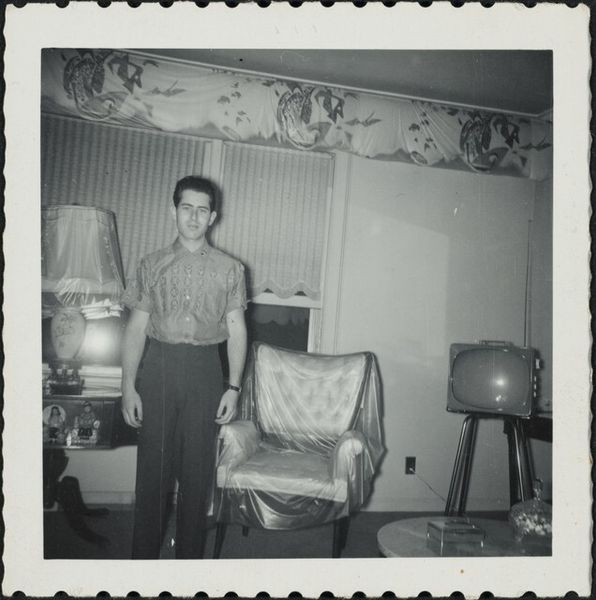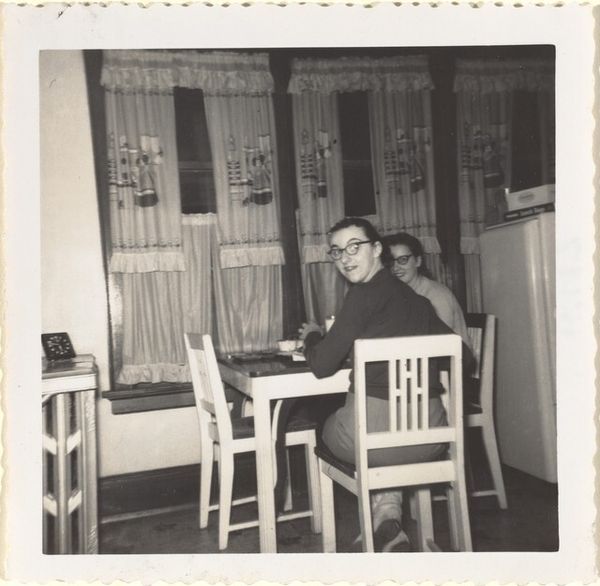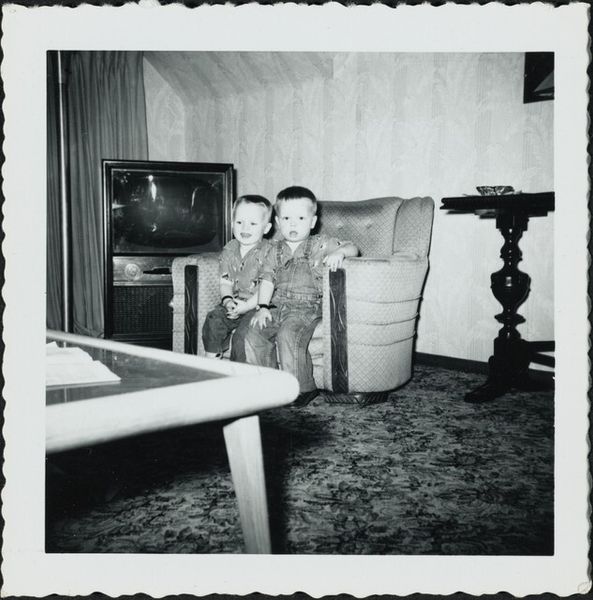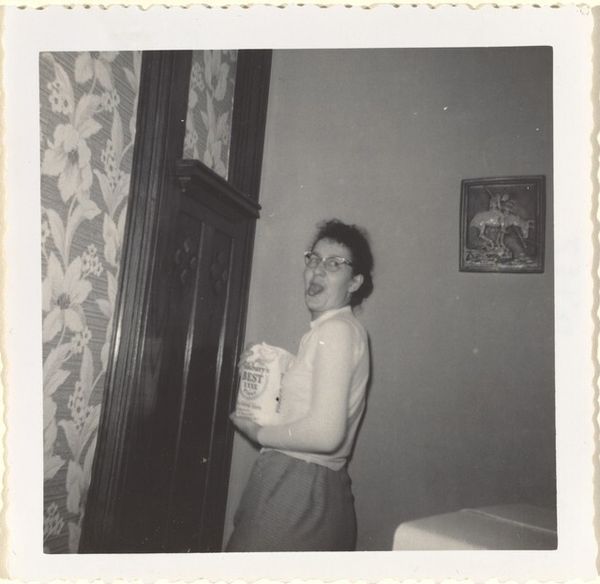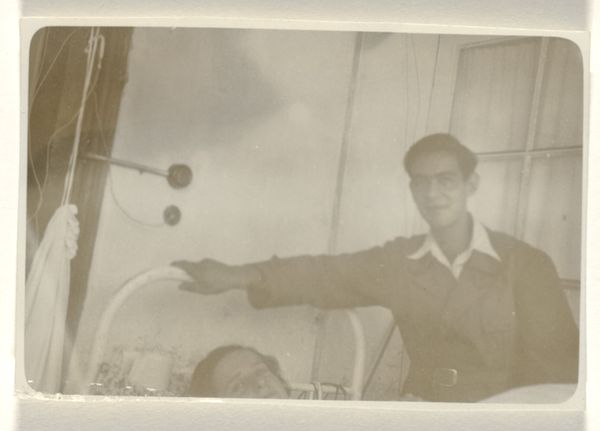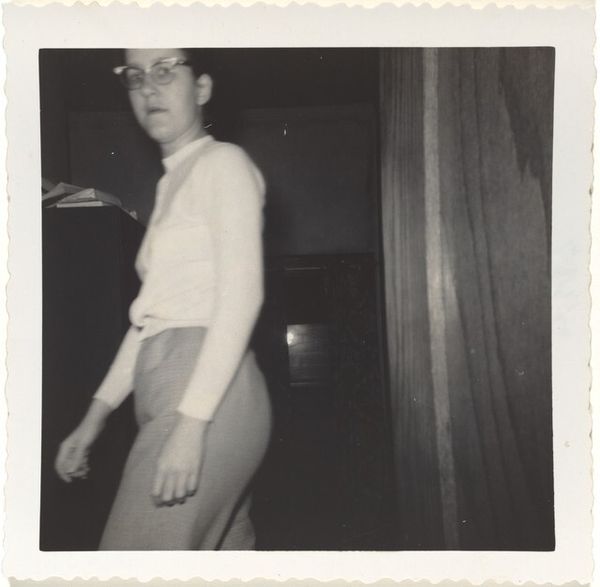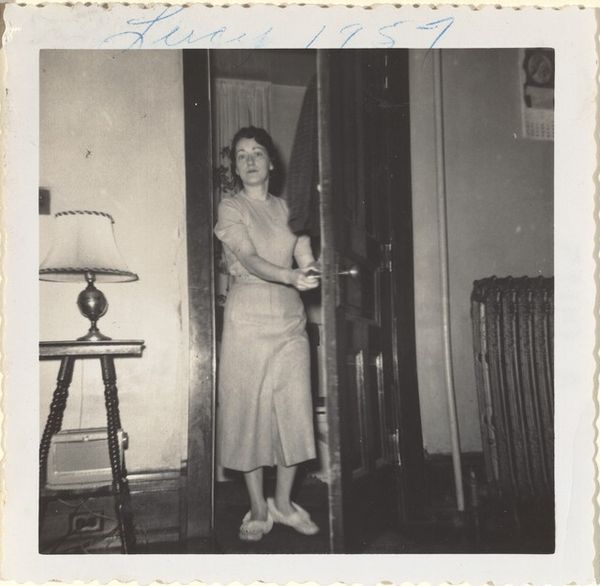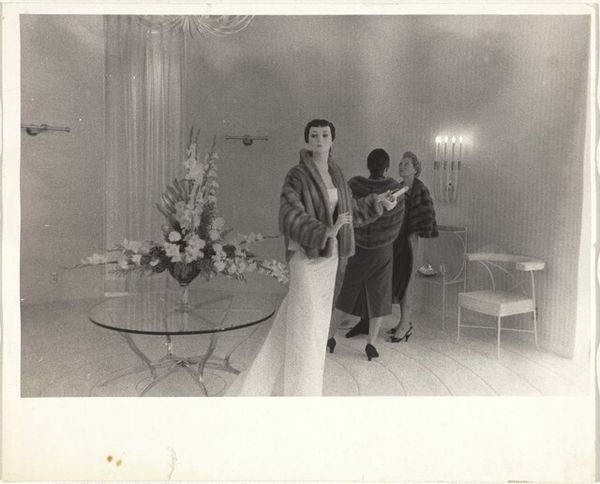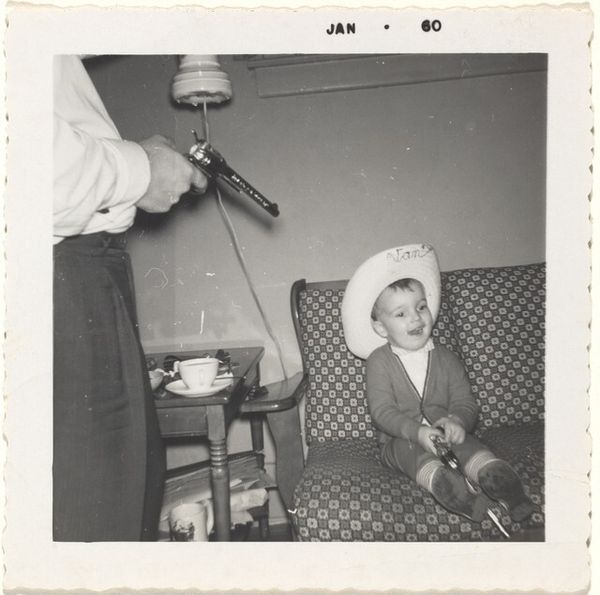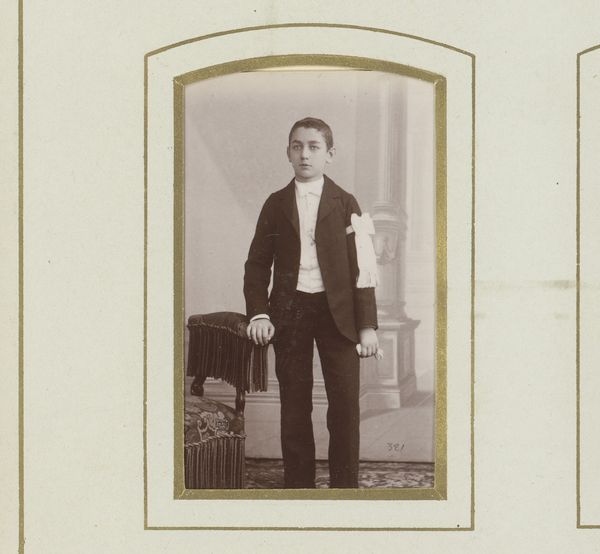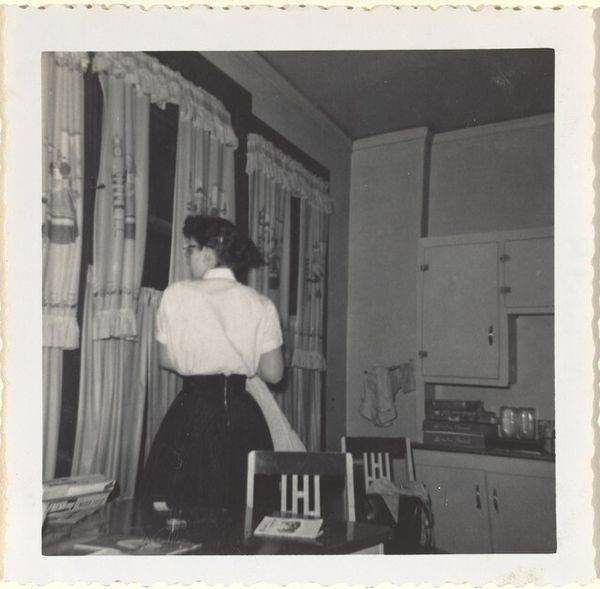
photography, gelatin-silver-print
#
print photography
#
photography
#
gelatin-silver-print
#
genre-painting
#
modernism
Dimensions: image: 7.6 × 7.8 cm (3 × 3 1/16 in.) sheet: 9.1 × 9 cm (3 9/16 × 3 9/16 in.)
Copyright: National Gallery of Art: CC0 1.0
Curator: What an evocative image. This gelatin-silver print, titled "Untitled (Man in front of television)" from around 1955, presents an interesting composition. What's your initial impression? Editor: Stark. The photograph’s gray scale underscores a material reality—a document, fixed with silver, capturing a man awkwardly juxtaposed with technology in the dawn of its ubiquitous consumption. Curator: The framing places the subject off-center, almost deferentially beside this monolithic television. The patterned curtains and what looks like formal attire create a tension. The textures—the paper itself, the fabric of the suit—play against the sleekness of the machine. Editor: Sleekness, yet undeniably clunky. This isn't the streamlined device of today; it’s a hulking piece of furniture. I see a very conscious consumption on display; both man and machine are materially performative, objects crafted by industrial forces, social conventions, the burgeoning entertainment economy. What is the labor story here? Curator: It prompts thoughts about postwar ideals and consumerism. Considering semiotics, one might decode the whiteness of the jacket against the darkness of the trousers as a study of contrasts, echoing broader social divisions and perhaps a nascent unease with technological progress. It feels less like a celebration, more like a standoff. Editor: I'm interested in what wasn't caught on camera, the labor behind its manufacture, the socioeconomic landscape which enabled this very specific type of domestic performance. Who assembled the television? Where were these clothes tailored? Consumption always overshadows that production history. The material cost and human hours embedded in its creation fade out behind the symbolic “glow” from its face. Curator: The arrangement of objects—a photograph and flowers atop the TV—speak volumes. Editor: Certainly, an altar built in adoration to both loved ones and industry itself. A somber performance frozen in a gelatin emulsion. I suppose if we focus less on what the television promises to deliver, and look at what was built, bought, and consumed for the photograph to be, we reveal a story of labor as intricate and carefully wrought as any other objet d'art. Curator: It's remarkable how a seemingly simple genre-painting can unravel so many complex layers of societal fabric. Editor: Indeed, a poignant study of the interplay of materials and social theater.
Comments
No comments
Be the first to comment and join the conversation on the ultimate creative platform.
